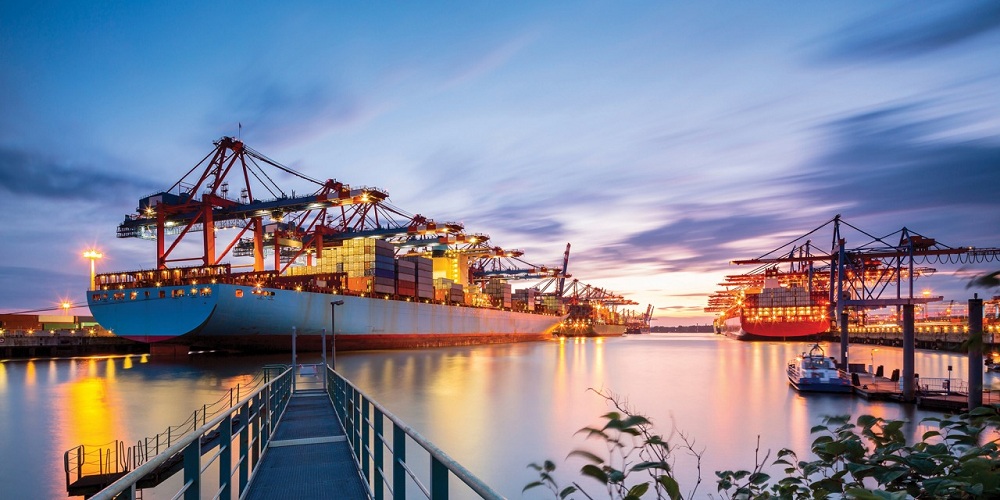Canada’s Minister for Transport, Marc Garneau, has announced an investment to expand and diversify the Port of Hamilton’s capacity, and to increase its multi-modal transportation options.
A new dock wall will be built at the Port’s busiest pier, and rail infrastructure will be upgraded to increase capacity and allow more rail providers access to the port. Roadways will be improved so trucks can access a new container positioning depot. Storage capacity will be increased with a new warehouse for multi-user bulk storage, and cargo laydown areas will be graded and paved.
The $17.7 million investment in port expansion is anticipated to strengthen trade connections to European, African and South American markets while promoting a greater flow of cargo through the port to the local region and its Canadian and U.S. supply chains.
The Port of Hamilton is the largest port in Ontario and the primary marine gateway to the Greater Toronto-Hamilton Area (GTHA). It is southern Ontario’s largest gateway for overseas exports of Ontario-grown corn, wheat and soybeans, handling more than a million tons of exports per year, and the largest gateway for imports of crop inputs used in southern Ontario agricultural production (urea ammonium nitrate, potash). It is also a major import gateway for finished steel used in GTHA automotive manufacturing, durable goods and construction projects, and export gateway for large Ontario-manufactured components, factory equipment and machinery.
Close to 10 million MT of marine cargo transits the port each year, more than all other southern Ontario ports combined. This cargo has a value of $1.9 billion, with internationally-traded products representing more than half of that value total. In addition to marine cargo, the Port of Hamilton handles an increasing amount of rail traffic. In 2016, more than 6,000 rail cars transited the port, a number that has doubled in the last five years.
The Port of Hamilton operates on 630 acres (255 hectares) of land on Hamilton Harbour and is home to 130 tenant companies in a variety of industries. These companies employ more than 2,100 people on the port lands, and the goods they handle are in turn connected to $6 billion in economic activity and 38,000 jobs in Ontario.
The federal investment will be matched by Hamilton Port Authority, in support of the port’s $35.45 million Westport Modernization Project. HPA’s plan for Westport is to create a multi-modal transportation hub. Currently, not all areas of the Westport zone are accessible by rail from other areas of the port. The improvements will also help address the challenge that the port has been facing in recent years of not having enough development-ready parcels of land to meet the demand from potential port users. The port authority expects to leverage the investments into $80-90 million in new business attraction.
“This investment recognizes what a critical trade gateway the Great Lakes are, in serving Canada’s most populated area, and the country’s industrial heartland,” said Ian Hamilton, President and CEO, Hamilton Port Authority. “This project is important because the Port of Hamilton is virtually out of room to grow, yet has unmet demand from users who want to invest in trade-oriented business in Ontario. Improvements to the Westport area will optimize the port’s current footprint, create new development parcels and help Canadian companies get their goods to global markets.”
The project will create an estimated 524 jobs during construction.
The government’s $2 billion National Trade Corridors Fund is one component of the $180 billion Investing in Canada Plan, the government’s strategy for addressing long-term infrastructure needs and supporting middle-class growth and well-paying jobs.
“Our government is investing in Canada’s economy by improving our trade and transportation corridors. We are supporting projects that will efficiently move commercial goods to market and people to their destinations, stimulate economic growth, create quality middle-class jobs, and ensure that Canada’s transportation networks remain competitive and efficient,” said Garneau.
In 2017, Canada’s total international merchandise trade amounted to $1.1 trillion. The United States continued to be Canada’s top trade partner, with $703 billion in trade ($415 billion exported, $288 billion imported), accounting for 63.5 percent of total Canadian trade in 2017.




























